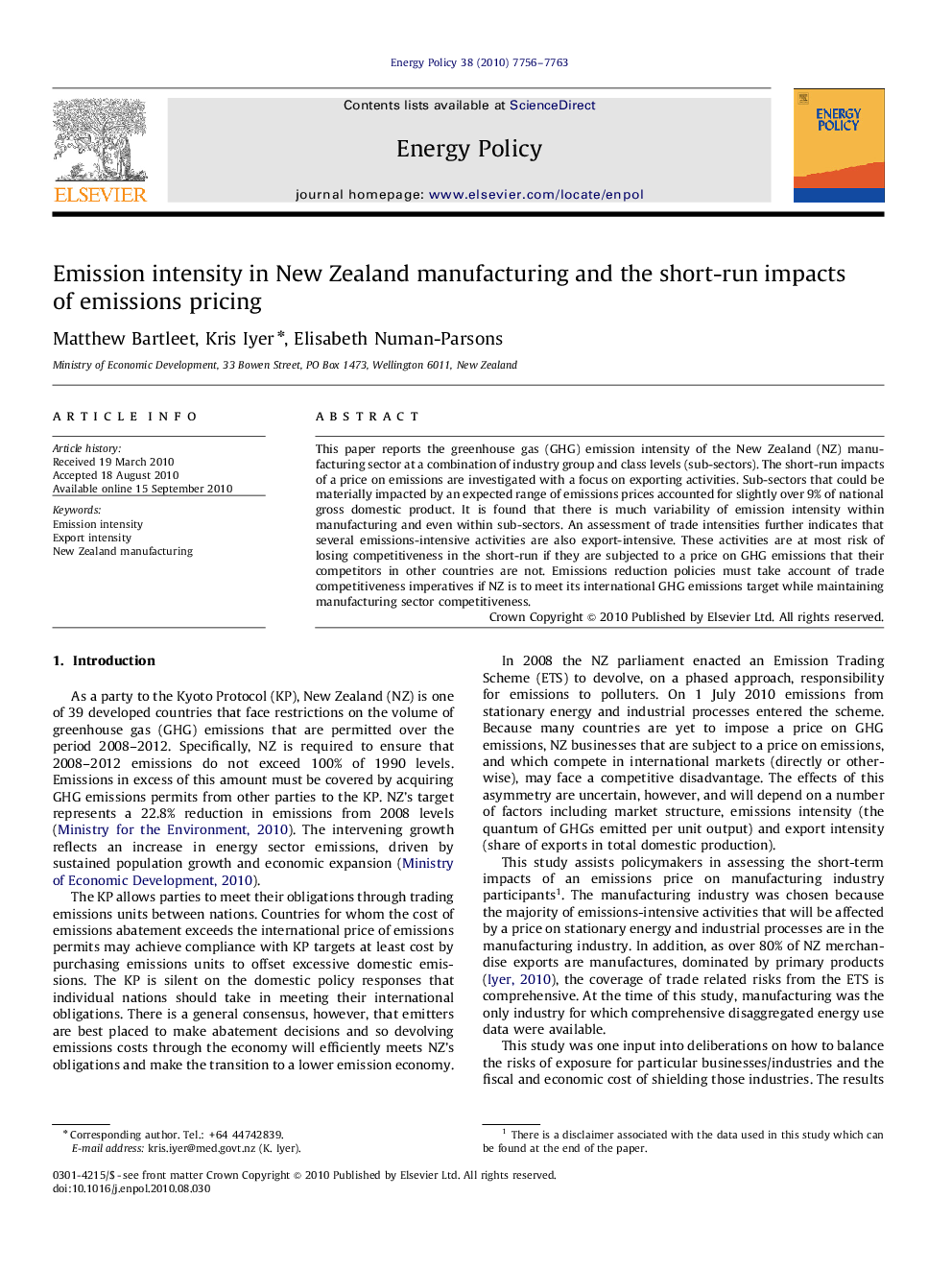| Article ID | Journal | Published Year | Pages | File Type |
|---|---|---|---|---|
| 996194 | Energy Policy | 2010 | 8 Pages |
This paper reports the greenhouse gas (GHG) emission intensity of the New Zealand (NZ) manufacturing sector at a combination of industry group and class levels (sub-sectors). The short-run impacts of a price on emissions are investigated with a focus on exporting activities. Sub-sectors that could be materially impacted by an expected range of emissions prices accounted for slightly over 9% of national gross domestic product. It is found that there is much variability of emission intensity within manufacturing and even within sub-sectors. An assessment of trade intensities further indicates that several emissions-intensive activities are also export-intensive. These activities are at most risk of losing competitiveness in the short-run if they are subjected to a price on GHG emissions that their competitors in other countries are not. Emissions reduction policies must take account of trade competitiveness imperatives if NZ is to meet its international GHG emissions target while maintaining manufacturing sector competitiveness.
Research Highlights►Estimates initial short-term competitiveness impacts of ETS on NZ manufacturing. ►Materiality of impacts determined based on firm level emissions and export intensity. ►Results suggest that food processing sub-sectors are likely to be most impacted. ►Iron and steel processing, and paper and pulp manufacture are impacted as well. ►Cumulative GDP share of materially affected sub-sectors slightly over 9%.
